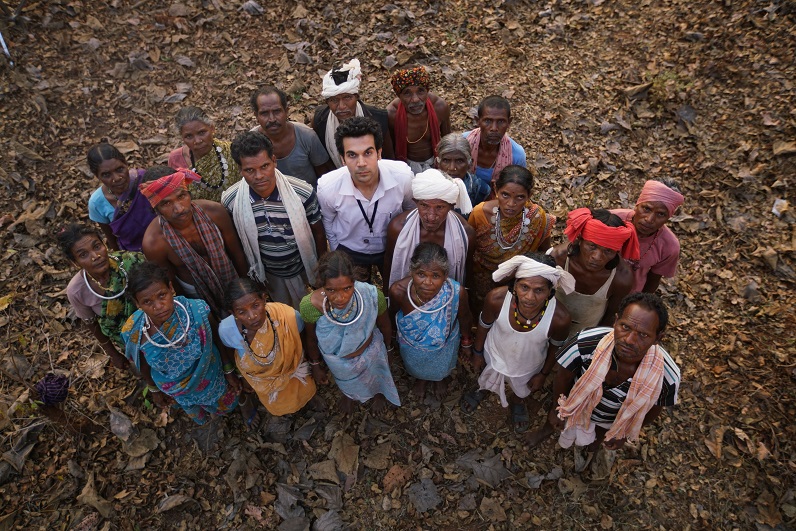
India’s Hindi film focus on cinema multiplexes – once seen as an industry saviour – has come back to haunt filmmakers. Can this “multiplex skew” be reversed? Vanita Kohli-Khandekar talks to filmmakers and theatre operators about finding diverse audiences and spreading the love across all screens.
It has been a terrible three years for India’s US$2.5-billion film industry. Tickets sales have been in a freefall and box-office revenue is stagnant. From 2.5 billion a decade ago, Indians bought less than a billion film tickets last year. More than two thirds of the local film industry’s revenue comes from ticket sales in the world’s largest film-making country.
What really has gone wrong here? Everything from low screen count and high taxation to rising talent costs. But the biggest reason, say industry mavens, is the “multiplex skew”.
“The film industry has given up on the single-screen market and that is the problem,” says Shailesh Kapoor, CEO of consulting firm Ormax Media.
Saroj Screens director, Akshaye Rathi, says “single screens in small towns are starved of content. They survive only on tent-pole films, the universal hit”. Saroj Screens owns and operates 17 single-screen theatres across Central India.
The 2016 hits Dangal and Sultan (both about wrestling) and the 2018 hit Padmavat (about a mythical queen) are the kind of films that work across single screens and multiplexes.
The multiplex skew is an 18-year-old problem. But it didn’t start out that way.
The corporatisation of the Indian film industry, which began in 2000, was led by the growth of multiplexes. These brought order and process to India’s fragmented film industry, returning a large portion of revenues which was leaking away. Over the years, multiplexes have contributed more than 60% to revenues.
However, this led to a situation where films are being written for the audiences that watch films in 2,000 multiplex screens instead of all of India’s 9,000 screens.
While multiplexes allow films such as Vicky Donor (about a sperm donor) or Newton (about elections in Naxal-ridden areas) find their audience, these films don’t yet work in small-town India...
India’s Hindi film focus on cinema multiplexes – once seen as an industry saviour – has come back to haunt filmmakers. Can this “multiplex skew” be reversed? Vanita Kohli-Khandekar talks to filmmakers and theatre operators about finding diverse audiences and spreading the love across all screens.
It has been a terrible three years for India’s US$2.5-billion film industry. Tickets sales have been in a freefall and box-office revenue is stagnant. From 2.5 billion a decade ago, Indians bought less than a billion film tickets last year. More than two thirds of the local film industry’s revenue comes from ticket sales in the world’s largest film-making country.
What really has gone wrong here? Everything from low screen count and high taxation to rising talent costs. But the biggest reason, say industry mavens, is the “multiplex skew”.
“The film industry has given up on the single-screen market and that is the problem,” says Shailesh Kapoor, CEO of consulting firm Ormax Media.
Saroj Screens director, Akshaye Rathi, says “single screens in small towns are starved of content. They survive only on tent-pole films, the universal hit”. Saroj Screens owns and operates 17 single-screen theatres across Central India.
The 2016 hits Dangal and Sultan (both about wrestling) and the 2018 hit Padmavat (about a mythical queen) are the kind of films that work across single screens and multiplexes.
The multiplex skew is an 18-year-old problem. But it didn’t start out that way.
The corporatisation of the Indian film industry, which began in 2000, was led by the growth of multiplexes. These brought order and process to India’s fragmented film industry, returning a large portion of revenues which was leaking away. Over the years, multiplexes have contributed more than 60% to revenues.
However, this led to a situation where films are being written for the audiences that watch films in 2,000 multiplex screens instead of all of India’s 9,000 screens.
While multiplexes allow films such as Vicky Donor (about a sperm donor) or Newton (about elections in Naxal-ridden areas) find their audience, these films don’t yet work in small-town India, which is dominated by single screens. And audiences melted away.
According to Ormax data for 2017, Telugu films sold 240 million tickets against 248 million for Hindi, which is spoken by six times as many people. This is because of the poor penetration of multiplexes in Andhra Pradesh and Tamil Nadu and the dominance of single screens in these markets. That pushed filmmakers to deliver films such as Vikram Vedha (Tamil) or The Ghazi Attack (Telugu) in 2017 that work across audiences.
“Tamil Nadu and Andhra Pradesh have nourished the (single screen) audience and kept them coming. It is very tough now to build the Hindi audience again,” Rathi says.
When Hollywood went through a similar crisis, it discovered super-heroes, aliens and snazzy computer graphics.
While India has done the odd Bahubali, “we can’t match Hollywood budgets for spectacle,” says Siddharth Roy-Kapur, president, Film and Television Producers Guild of India.
As luck would have there is a lot of material within Indian history and mythology for spectacle films. But every time someone tries it, like in Padmavat, a controversy erupts. This leaves studios in a creative quandary that they haven’t found a way out of. Yet.
Rathi thinks they have.
He points to tent-pole films announced for 2018. The biggest among these is Yashraj Films’ Thugs of Hindostan, starring Amitabh Bachchan and Aamir Khan. Thugs of Hindostan is the story of a gang of thugs who posed a challenge to the British Empire in India between 1790 and 1805.
There is also Red Chillies Entertainment’s Zero, starring Shah Rukh Khan as a dwarf in love with actress Katrina Kai, among half a dozen other films.
“The process,” Rathi says, “has begun”.
Published in Issue One of ContentAsia's inprint+online 2018 (4 April 2018)



















